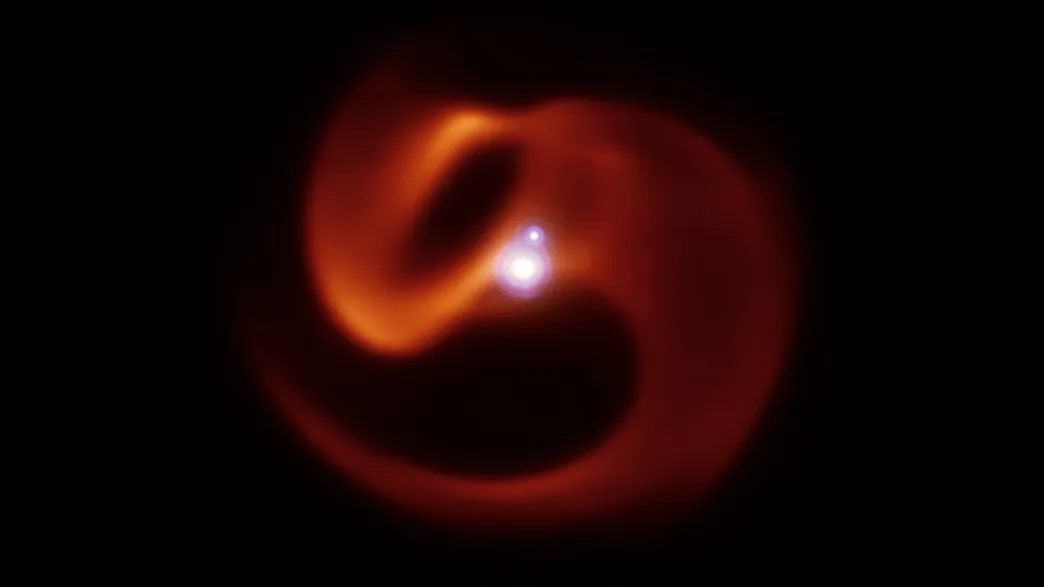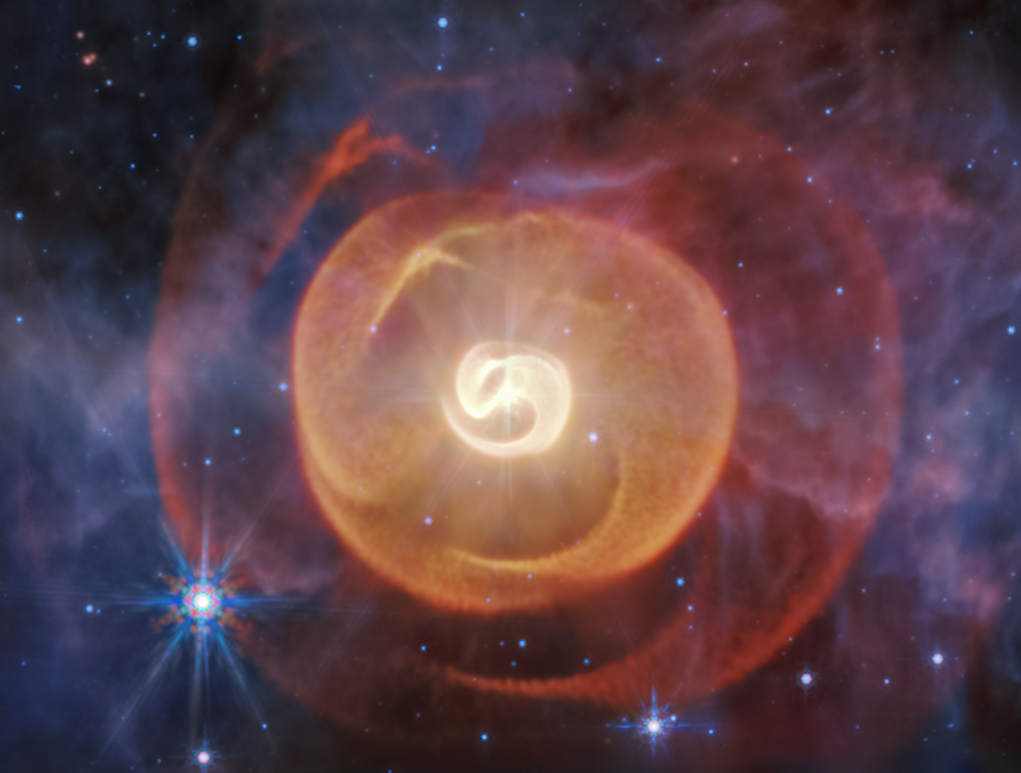From the very first images, JWST showed that it was going to be a revolutionary instrument, and yet it continues to surprise us. New observations from the infrared space telescope have upended previous observations of a relatively close star system. It has revealed a complexity that had not been seen before in spectacularly crisp new images.
The rest of this article is behind a paywall. Please sign in or subscribe to access the full content.
The aging star system is known as Apep after an ancient Egyptian deity, a giant snake and underworld being which embodies chaos and disorder. Why has this system gained this name? Observations from the Very Large Telescope (VLT) showed it has a serpentine shell of dust. Years of observations from the VLT have provided insights, but it is only with the jump into infrared that the full picture is revealed.

The 2018 VLT image of Apep or 2XMM J160050.7-514245. Three stars are in this picture, although the two Wolf-Rayet stars look like a single one in the center.
Image Credit: ESO/Callingham et al.
JWST is an infrared telescope, which means it can see through the gas and dust that visible light telescopes like Hubble cannot, peering deeper into the cosmos than we ever have before.
Its mid-infrared instrument can see the glowing cool dust of a system like Apep. Turns out there is not a single shell of dust around Apep, but four concentric ones, the outermost barely visible even by the space observatory. The source of them is two Wolf-Rayet stars between 10 and 20 times the mass of our Sun. This class of stars is made of extremely hot objects – some with surfaces almost 40 times hotter than the Sun’s. They have lost their outer layers of hydrogen and are fusing helium and other heavier elements.
These stars are very interesting because they are believed to be the likely progenitors for long gamma-ray bursts – the most powerful explosions in the universe – when they go supernova. What’s unique about this system is that they take a very long time orbiting each other, 190 years.
“This is a one-of-a-kind system with an incredibly rare orbital period,” said Ryan White, a PhD student at Macquarie University in Sydney and lead author of one of two new papers on JWST’s revelations on Apep, in a statement. “The next longest orbit for a dusty Wolf-Rayet binary is about 30 years. Most have orbits between two and 10 years.”

The fourth shell can be seen best at the edge of the full image.
Image Credit: NASA, ESA, CSA, STScI; Science: Yinuo Han (Caltech), Ryan White (Macquarie University); Image Processing: Alyssa Pagan (STScI)
For about a quarter of a century, during those 190 years, the stars are close enough that their stellar winds interact. This collision and mixing end up creating a lot of carbon-rich dust that spreads out in those shells at 2,000 to 3,000 kilometers (1,200 to 2,000 miles) per second. The dust is hot for our standard but not for telescope observations, unless you are JWST. Still, there is a reason why it could track the shells so far away.
“Carbon dust grains retain a higher temperature even as they coast far away from the star,” explained lead author of the second paper, Yinuo Han, a postdoctoral researcher at Caltech.
There is something else that the combined data of the VLT and JWST has solved. They confirmed the presence of a third star in the system, first seen in the 2018 observations. A supergiant companion, between 40 to 50 times the mass of the Sun, is flying through the shells, cutting through them.
“The cavity is more or less in the same place in each shell and looks like a funnel,” White said. “I was shocked when I saw the updated calculations play out in our simulations.”
Only 1,000 Wolf-Rayet stars are believed to exist in the Milky Way. Apep is the only system in the Milky Way with two of them orbiting each other. It is incredible to have found it, and it is extraordinary that we can now study it in such detail.
Both studies are published in The Astrophysical Journal here and here.
Source Link: Not An Artist Impression – JWST's Latest Image Both Wows And Solves Mystery Of Aging Star System